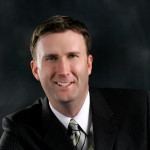On this topic, K C Gauldine interviewed Tom Erb, of Tallann Resources, a consulting firm specializing in the Staffing and Recruiting Industry. As one of the top national speakers in the staffing industry, Erb is immediate past president of the Ohio Staffing and Search Association, past president of the Human Resources Association of Central Ohio; he currently serves on the board of the National Association of Personnel Services (NAPS).
Gauldine:
The Harvard Business Review has projected that contingent labor will make up 25% of the global workforce by 2020.
Erb:
 (Laughter) I would love to see it. I think that is aggressive. There are other parts of the world that use contingent labor more than the U.S. does. Although the U.S. workforce is growing, we only make up about 2% of the workforce today. This projection does illustrate the fact that companies are fundamentally changing the way they look at their workforce and employees are changing the way they look at work arrangements as well. Having access to the best talent when you need them can be a real competitive advantage. Contingent labor is not a fad, this is a trend that is only going to grow.
(Laughter) I would love to see it. I think that is aggressive. There are other parts of the world that use contingent labor more than the U.S. does. Although the U.S. workforce is growing, we only make up about 2% of the workforce today. This projection does illustrate the fact that companies are fundamentally changing the way they look at their workforce and employees are changing the way they look at work arrangements as well. Having access to the best talent when you need them can be a real competitive advantage. Contingent labor is not a fad, this is a trend that is only going to grow.
Gauldine:
Is a flexible workforce critical to achieving overall business objectives?
Erb:
I think it depends on the types of skills needed. Contingent staffing has to be considered and utilized, otherwise you are not going to have access to certain groups of talent and the best in particular skill sets. IT is a good example. The majority of software developers want flexibility. Technology is enabling companies to be more flexible in their workforce.
This last sustained recession was a catalyst for companies to realize that you can provide a buffer to your fulltime workforce by having a % of your workforce as contingent or variable. Companies had to use more variable employees during such a slow recovery. It was such a gradual increase that companies were reluctant to invest in full-time employees again.
A flexible workforce allows you to have more employees without increasing square footage, equipment, etc. which opens up a great many more workforce options that just wasn’t available 5 years ago when employees sat at a desk with fully furnished equipment and worked 40 hour weeks.
Gauldine:
How do the Millennials and the Affordable Care Act contribute to the increase in contingent labor?
Erb:
Millennials look at work arrangements differently. It has to do with their desire for work/life balance, growing up with technology and they are, by nature, more mobile. We are also seeing a lot of Generation X and Baby Boomers that are going more for a flexible schedule.
Regarding the ACA, we are already seeing a shift with candidates in full-time jobs with benefits who have been extremely resistant to taking on contract positions now being more willing due to the portability of benefits. Active job seekers are more willing to take a chance because of the availability of the health care benefits. This change is going to take a while. In the past this was a game stopper, but now there is one less thing to stand in the way of being a contractor.
LEAD Management Consulting, LLC provides process improvement, project management resources and change management services to mid to large corporations and the State of Indiana. LEAD has earned its trusted reputation by delivering extraordinary industry knowledge and expertise, producing results that make a difference.
To learn more about the services available from LEAD Management Consulting. contact us today at 317.706.6716.

K C Gauldine is an accomplished leader with thirty years of C-level experience in business, social enterprise, entrepreneurial and nonprofit enterprises.
